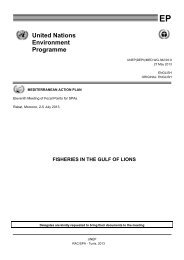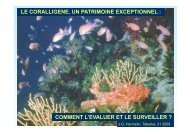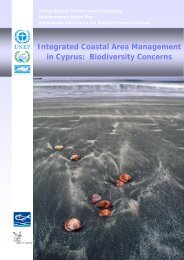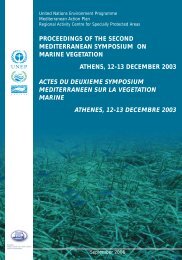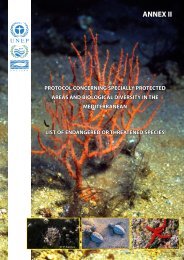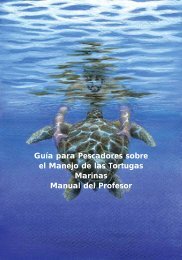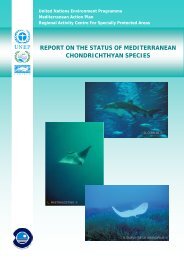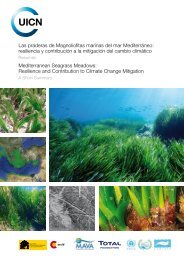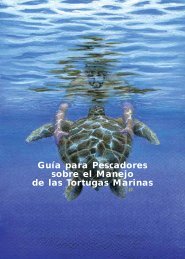Plan d'Action pour la conservation des espèces d'oiseaux inscrites ...
Plan d'Action pour la conservation des espèces d'oiseaux inscrites ...
Plan d'Action pour la conservation des espèces d'oiseaux inscrites ...
You also want an ePaper? Increase the reach of your titles
YUMPU automatically turns print PDFs into web optimized ePapers that Google loves.
Current Action <strong>P<strong>la</strong>n</strong>s<br />
Species Action <strong>P<strong>la</strong>n</strong> for the Mediterranean Shag Pha<strong>la</strong>crocorax<br />
aristotelis <strong>des</strong>marestii in Europe prepared by BirdLife International<br />
on behalf of the European Commission (final draft December<br />
1999).<br />
Action <strong>P<strong>la</strong>n</strong> objectives and target<br />
To ensure the survival of Mediterranean popu<strong>la</strong>tions.<br />
Proposed action<br />
- Inventory and map critical habitats.<br />
- Confer strictly protected status on the species.<br />
- Prohibit all types of disturbances to the breeding colonies.<br />
- Monitor popu<strong>la</strong>tions.<br />
- Create SPAs where the species breeds, and encourage buffer<br />
zones surrounding breeding areas including adjacent sea area.<br />
- <strong>P<strong>la</strong>n</strong>, regu<strong>la</strong>te and/or manage activities and processes of<br />
coastal and infrastructure development near to breeding sites.<br />
- Take measures to influence fishing policies in order to avoid<br />
negative effects on food stocks and food avai<strong>la</strong>bility, and to<br />
avoid mortality from bycatch.<br />
- Prevent oil spills and chemical pollution of the sea.<br />
- Identify important bird areas at sea for the species.<br />
Pygmy Cormorant<br />
Pha<strong>la</strong>crocorax pygmeus<br />
Current status<br />
The main breeding popu<strong>la</strong>tions in the Mediterranean of this globally<br />
threatened species are found in Albania, Serbia, Greece, Turkey,<br />
with some pairs in Israel and Italy. It is restricted to low<strong>la</strong>nd freshwater<br />
and brackish habitats, and in winter frequents coastal <strong>la</strong>goons,<br />
deltas, rivers and riparian forests. The whole popu<strong>la</strong>tion of the<br />
Mediterranean countries probably numbers less than 2,500 pairs.<br />
Current factors causing loss or decline<br />
Degradation and loss of wet<strong>la</strong>nd habitat; disturbance and<br />
hunting; <strong>des</strong>truction of breeding colonies.<br />
Status under international instruments<br />
Appendix II - Convention on the Conservation of European<br />
Wildlife and Natural Habitats (1979).<br />
Appendix II - Convention on the Conservation of Migratory<br />
Species of Wild Animals (1979).<br />
European Union Regu<strong>la</strong>tion <strong>la</strong>ying down certain technical<br />
measures for the <strong>conservation</strong> of fishery resources in the<br />
Mediterranean (1626/94 (EC) 1994).<br />
Listed in the AEWA Action <strong>P<strong>la</strong>n</strong> (Column B Category 1)<br />
22<br />
«The Pygmy Cormorant,<br />
c<strong>la</strong>ssified as globally<br />
threatened, is a<br />
cormorant inhabiting<br />
<strong>la</strong>rge reed-beds in<br />
deltas and coastal<br />
<strong>la</strong>goons rather than the<br />
sea.»




